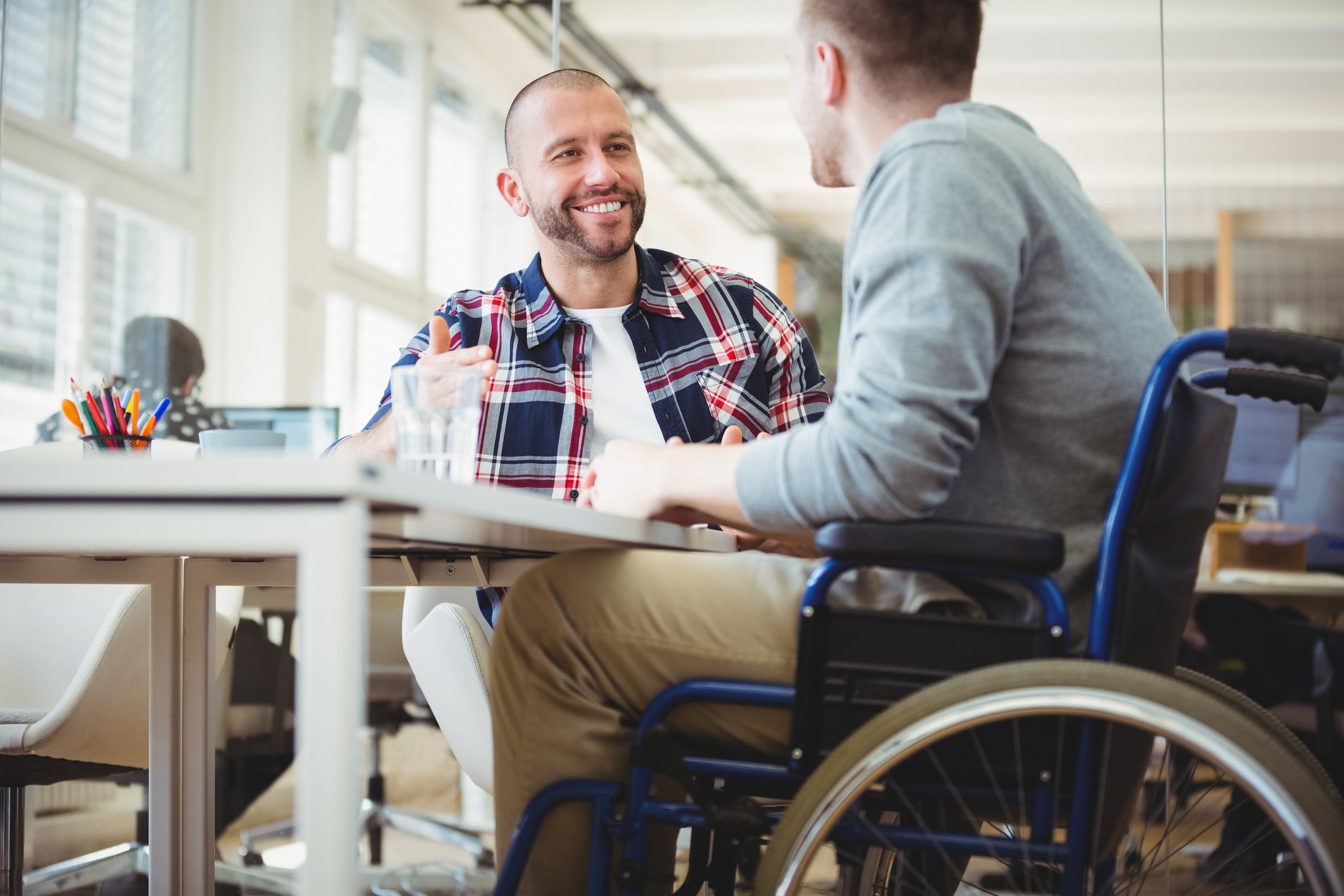HR professionals are likely to be aware that a work-space has a legal obligation to meet the needs of any employee with a disability. And yet, all too often, offices are not set up to accommodate variable needs. This includes both the physical space of the office and practices and cultures which exclude or fail to acknowledge the needs of the disabled.
But there are small changes that can be made which will vastly improve disabled access. Here we run through some important changes that can improve accessibility in the workplace.
1. Processes which ensure frequent communication
The best way to ensure needs are being met is by frequent communication. Each individual’s needs will be different – there is no one blanket solution that will suit every employee. Frequent communication, especially initially, allows the employee to feedback on whether current policies are fit for purpose and gives them space to identify issues that may have arisen which haven’t been anticipated by the company. These meetings should be weekly, at least initially.
For employees with mental health disabilities, such as seasonal affective disorder, you may need to adapt your communication style. Employees may have problems with recalling information, so everything should be documented clearly for their reference.
You may also need to consider style of communication. Everything from tone of voice, choice of words, body language and the choice between email or verbal communication can have different effects on how comfortable an employee feels and the quality of their work.
2. Training for managers and other employees
Educating your managers and staff about disabilities in the workplace is pivotal to creating an all-inclusive culture. It’s best to bring in an external consultant who is knowledgeable about disability to undertake this work.
It’s also a good idea to consult with your disabled employees about what they would want to see from this kind of activity and areas that other employees or the company needs to improve on when it comes to disability.
3. Appropriate equipment
The physical environment is important for individuals with any type of disability. Adapting the workspace doesn’t have to be a huge undertaking – it can start with ensuring the right equipment and storage solutions are available. Equipment that improves the accessibility of your space includes:
- height adjustable desks
- accessible plug sockets
- adjustable monitor arms
- improved cable management to reduce trip hazards
- underfloor power to remove obstacles on the floor
4. Allowing modifications to the work day
Disabled employees may need some accommodation when it comes to working hours. Medications can affect ability in the morning, energy levels may be affected differently by the working day and time may be needed for medical appointments.
Flexible start times, more frequent breaks or time working from home can all be considered as possible methods to accommodate workers.
